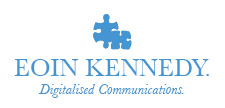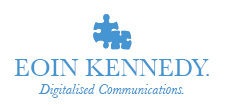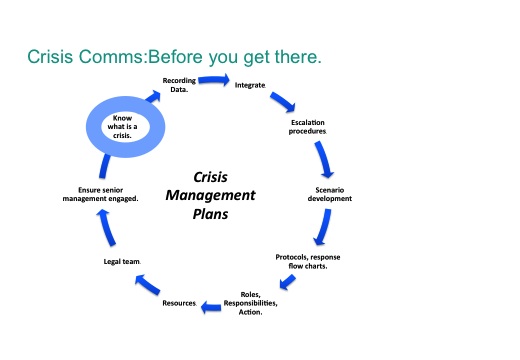Prepare for the worst. #SocialCrisis 3
One of the main things I have observed from being involved in numerous crisis is that in the heat of a crisis the quality of thinking is generally reduced, the ability to make decisions becomes paralysed and common sense gets replaced by fear.
Social media crisis happen at lightening speed and any delays generally add to the woes that companies face. Once a crisis hits it gets increasingly hard to get answers and even the clearest thinkers become hindered by the emotional turmoil that a crisis brings and the over analysis of pro and cons of certain approaches.
The time for thinking is before any crisis hits when the time consuming plotting of what could go wrong and how you could/can/should respond. This is the time to debate the pros and cons of your potential responses so you are able to ‘manage, do and tweak’ when things get really busy.
Here are some of the things to consider:
1. What is a social media crisis? Not every situation is a crisis and its important to separate an awkward situation from a crisis that has real impact on the organization. Different type companies and corporate cultures also have varying level of sensitivity to online criticism while those in regulated environments have a clearer dictate of what is crisis. Jay Baer in this crisis post talks about the three true characteristics of a crisis which can help identify a crisis including:
A social media crisis has information asymmetry.
A social media crisis is a decisive change from the norm.
A social media crisis has a potentially material impact on the company overall.
2. Recording Data. It is a really good idea to have a system for recording what happened/interventions etc before a crisis even happens. This includes listening posts which I will cover later and includes areas. For larger companies this could be their CRM system and for smaller organizations could be a spreadsheet recording dates, intervention, links, steps taken etc. This information can get lost very fast in email and having a central repository can save a lot of time and ensure everyone is on the same page especially as the team expand.
3. Integrate your communications. A social media team that is ‘siloed’ in structure is destined to fail and it is even more crucial in a crisis where the impact of a crisis expands greatly beyond social media. The social media team, structure and reporting should all be aligned and integrated with the other teams in company. This means ensuring a flat team structure with PR/Marketing departments, senior management and external agencies. A lot of time, wasted effort and miscommunication can happen where there is no predefined structure – this structure ranges from sophisticated online collaboration software to simply ensuring that teams details are shared out. Most companies have matured and fully formed crisis plans already in existence – social media crisis documentation should be included in these. Once teams are integrated all communications should be synchronized and orchestrated from email, pr, internal communications to postings on social media assets.
4. Scenario Development. It really helps to bring a social crisis document alive by mapping out the things that could possibly go wrong, what the public/customer reaction would be and how it could spread in social media. Although not every situation can be imagined, a greater understanding of what could be posted, shared, complained about can really help. A lot of social media crisis revolve around poor human behaviour or interactions. Start with a catalytic event (or something that could go wrong with your company) and then map out what the next steps would be – what platforms, type media, who would most likely talk about it, what would they say, how vocal would they be etc. Most organisations falter at this point because they believe the variety of possibilities is too great. While this may be true to some extent, commonalities rapidly appear.
5. Escalation procedures. What happens once something is spotted online (either through social listening services or unusual activity). At what point is it shared with senior management, who is authorized to respond and to what type subject matter. How does this communication happen at what speed, is there a code used in the subject line of emails to highlight crisis. Email is a superb tool but can be overwhelming. Overuse can lead to important emails being ignored as can not flagging them in advance.
6. Establish protocols, response charts. Investigating and establishing the protocols of how you respond to an incident can save an enormous amount of time. This should be as prescriptive as possible and force the organization to take a deep and committed view to what action it would take. This could take the form of a flow chat detailing yes/no responses to a series of linked statements.
7. Roles, responsibilities and actions. Predicting what could happen is essential, as is role playing and establishing protocols but these could become academic if considerable thought is not given to deciding who does what, what exactly they are responsible for and what actions they are expected to take. This also includes who sits on this team – is there a need to establish a team that physically meets and who is on the wider team e.g. agencies. How this team communicates with each other is also important – what online platforms could be used and test them out in advance to ensure they work.
8. Resources. Outside of the human capital resource requirements there may be other budgetary requirements to managing a crisis. Many organizations have elongated budget approval mechanisms and supplier accreditation and the middle of a crisis is not the time to find out that you don’t have free hand to buy Adwords, commission listening tools or hire outside help. The are a number of resource areas that need to be considered from listening software, building of dark sites, content creation, online collaboration tools to name a few. A crisis can soak up a huge amount of senior management time so its also important to be able to delegate work to other teams to ensure the business continues to function.
9. Legal Team. Involving the legal team is probably not necessary for all occasions but it is important to know when they need to be consulted and at what level. Many companies don’t factor in the time element involved in getting a legal opinion on a topic, in addition to the related debate should you decide to proceed along certain path at variance to the pure legal perspective. In certain regulated industries companies can be restricted by legal constraints but most find themselves in the trickier position of using judgment – normally based on a combination of gut feel and experience. Many pronouncements can be made in haste to dampen down a crisis that the company may find it difficult or are unable to live with – post crisis.
10. Make sure senior management is engaged. Nothing creates a keener interest by senior management in a company’s social profile than a crisis. This can result in unproductive side conversation in a crisis if management is not aligned or informed about social media and the company’s strategy. Senior management should be aware of (and ideally have bought into it through being engagement in its creation) the company’s social media policy and also the wider developments in the industry.
Some nice common sence pointers in this video post by Zoodikers Consulting
In the next post I will cover some of the other considerations for an organization before they encounter a crisis.





2 Comments. Leave new
[…] Kennedy, the group chair gave a presentation about Managing a Social Media Crisis, which is well worth a look at if you fear the worst. (But I was at pains to point out that your […]
Really great piece Eoin.
A.